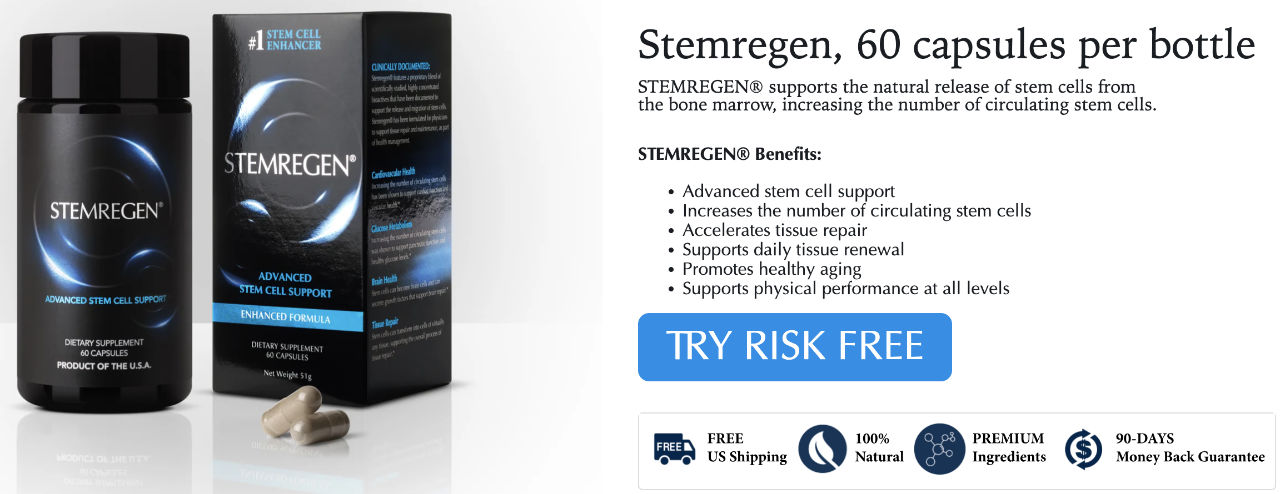Are you considering regenerative medicine treatments but worried about the cost?
You’re not alone. Thousands of patients face the same question every day: will my insurance cover stem cell therapy, PRP injections, or other regenerative treatments?
The answer is more complicated than a simple yes or no, and understanding the current insurance landscape could save you thousands of dollars.
Regenerative medicine represents one of the most promising frontiers in healthcare, offering hope for conditions that traditional medicine struggles to treat.
From stem cell therapy for joint pain to gene therapy for inherited diseases, these treatments promise to repair and regenerate damaged tissues.
However, the financial reality often creates a significant barrier between patients and these potentially life-changing treatments.
This comprehensive guide examines the current state of insurance coverage for regenerative medicine in 2025, including specific policies from major insurers, recent regulatory changes, and practical strategies for patients seeking coverage.
Whether you’re exploring treatment options for orthopedic conditions, chronic wounds, or serious genetic disorders, this article provides the essential information you need to make informed decisions about your healthcare and finances.
The Current State of Regenerative Medicine Insurance Coverage
The reality of regenerative medicine insurance coverage in 2025 is stark: most treatments remain largely uncovered by traditional health insurance plans.
According to recent industry analysis, the vast majority of regenerative therapies are considered experimental by insurance companies, leaving patients to pay substantial out-of-pocket costs [1].
FDA Approval vs. Insurance Coverage: A Critical Distinction
A common misconception among patients is that FDA approval automatically guarantees insurance coverage. This assumption proves costly for many seeking regenerative treatments.
As of May 2025, the FDA has approved over 42 cellular and gene therapy products, including notable treatments like KYMRIAH, YESCARTA, and ZOLGENSMA [2].
However, FDA approval serves as a safety and efficacy benchmark, not a coverage mandate for insurance companies.
Each insurance provider makes independent coverage decisions based on their own criteria, which typically include:
- Clinical evidence demonstrating treatment effectiveness
- Cost-effectiveness compared to existing treatments
- Medical necessity for the specific condition
- Long-term safety data from post-market studies
This disconnect between regulatory approval and insurance coverage creates a significant gap that patients must understand before pursuing regenerative treatments.
Major Insurance Companies’ Positions on Regenerative Medicine
The stance of major insurance providers reveals the challenging landscape patients face when seeking coverage for regenerative treatments.
Cigna Healthcare maintains one of the most restrictive policies regarding regenerative medicine.
Their medical coverage policy, effective December 15, 2024, explicitly states that stem cell therapy is “considered not medically necessary” for orthopedic and musculoskeletal conditions [3].
This policy specifically excludes coverage for:
- Regeneration and repair of musculoskeletal tissue
- Treatment of joint disease and cartilage repair
- Osteoarthritis treatment in knees, hips, ankles, and shoulders
- Fracture repair and osteonecrosis treatment
Medicare and CMS take an equally restrictive approach to regenerative medicine coverage. The Centers for Medicare and Medicaid Services covers autologous platelet-rich plasma (PRP) only for patients with chronic non-healing diabetic, pressure, or venous wounds, and only within approved clinical research studies [4].
This extremely limited coverage applies solely to wound healing applications and excludes all orthopedic uses of PRP therapy.
Other major insurers, including UnitedHealthcare, Aetna, and Blue Cross Blue Shield, generally follow similar patterns of limited or no coverage for most regenerative medicine applications, particularly for orthopedic and cosmetic uses.
Specific Regenerative Treatments and Their Coverage Status
Understanding which specific regenerative medicine treatments have insurance coverage helps patients make informed decisions about their healthcare options. The coverage landscape varies dramatically depending on the type of treatment, medical condition, and intended use.
Treatments with Limited Insurance Coverage
Hematopoietic Stem Cell Transplants represent the most established and widely covered regenerative medicine treatments. These procedures, used primarily for blood cancers and certain genetic disorders, typically receive full insurance coverage when medically necessary. The established clinical evidence and FDA approval for these treatments have led to broad acceptance by insurance providers.
Gene Therapies for Rare Diseases increasingly receive coverage, particularly for conditions with no alternative treatments. Recent approvals like LUXTURNA for inherited retinal dystrophy and ZOLGENSMA for spinal muscular atrophy have generally achieved insurance coverage, though often after extensive prior authorization processes.
Platelet-Rich Plasma for Wound Healing receives limited Medicare coverage under specific circumstances. CMS covers PRP only for chronic non-healing wounds in patients enrolled in approved clinical research studies, with applications approved before August 2014 [4].
Treatments Typically Not Covered by Insurance
The following table summarizes common regenerative treatments and their typical insurance coverage status:
| Treatment Type | Medical Application | Typical Coverage Status | Average Cost Range |
|---|---|---|---|
| Stem Cell Therapy | Orthopedic conditions | Not covered | $5,000 – $8,000 |
| PRP Injections | Joint pain, sports injuries | Not covered | $500 – $2,000 |
| Stem Cell Therapy | Neurological conditions | Not covered | $20,000 – $30,000 |
| Adipose-Derived Stem Cells | Cosmetic applications | Not covered | $15,000 – $30,000 |
| Bone Marrow Stem Cells | Orthopedic repair | Not covered | $15,000 – $30,000 |
| CAR-T Cell Therapy | Blood cancers | Usually covered | $400,000+ |
| Gene Therapy | Rare genetic diseases | Often covered | $500,000 – $2,000,000 |
The Experimental Treatment Classification
Most insurance denials for regenerative medicine cite the “experimental” or “investigational” classification. This designation means that insurance companies believe insufficient clinical evidence exists to support the treatment’s effectiveness for the intended use. The experimental classification particularly affects:
Orthopedic Applications: Despite growing clinical evidence, most insurers consider stem cell therapy and PRP injections for joint pain, arthritis, and sports injuries as experimental treatments.
Neurological Conditions: Stem cell treatments for conditions like multiple sclerosis, Parkinson’s disease, and stroke recovery typically face experimental classifications and coverage denials.
Anti-Aging and Cosmetic Uses: Any regenerative treatment marketed for anti-aging, cosmetic enhancement, or general wellness purposes receives automatic experimental classification and coverage denial.
Recent Regulatory Changes Affecting Coverage in 2025
The regenerative medicine landscape continues to evolve rapidly, with significant regulatory changes in 2025 that directly impact insurance coverage and patient access to treatments.
CMS Reimbursement Changes for Skin Substitutes
Effective February 12, 2025, the Centers for Medicare and Medicaid Services implemented major changes to physician reimbursements for placenta-derived products and skin substitutes [5]. These changes significantly restrict coverage:
- Only 17 allograft products now receive reimbursement for diabetic foot ulcer treatment
- Only 5 allograft products receive coverage for other wound care applications
- Previous coverage for dozens of similar products was eliminated
This reduction in covered products reflects CMS’s increasing scrutiny of regenerative medicine costs and effectiveness. The changes particularly impact wound care clinics and patients with chronic wounds who previously had access to a broader range of treatment options.
FDA Enforcement Actions and Their Coverage Impact
Recent FDA enforcement actions against unproven stem cell clinics have created additional insurance coverage challenges. A significant court ruling in October 2024 gave the FDA expanded authority over unproven stem cell therapies in California, leading to increased scrutiny of treatment providers [6]. This regulatory tightening has prompted insurance companies to become even more conservative in their coverage decisions.
State-Level Regulatory Developments
Several states have introduced legislation affecting regenerative medicine coverage and practice. These state-level changes create a patchwork of regulations that influence insurance coverage decisions and patient access to treatments.
The Cell and Gene Therapy Access Model
CMS introduced the Cell and Gene Therapy (CGT) Access Model in December 2024 to help states provide better access to high-cost cell and gene therapies for Medicaid patients [7]. While this model primarily addresses approved therapies rather than experimental treatments, it represents a significant step toward improving access to legitimate regenerative medicine treatments.
Understanding the Cost Burden for Patients
The financial impact of limited insurance coverage for regenerative medicine creates substantial barriers for patients seeking these treatments. Understanding the true cost burden helps patients make informed decisions about pursuing regenerative therapies.
Comprehensive Cost Analysis
According to 2025 industry data, regenerative medicine costs vary dramatically based on treatment complexity and medical application [1]. The cost structure typically includes:
Simple Blood-Based Treatments: Procedures using the patient’s own blood, such as basic PRP therapy, represent the most affordable option, with costs starting around $1,500 per treatment.
Invasive Extraction Procedures: Treatments requiring bone marrow or adipose tissue extraction involve significantly higher costs due to the surgical nature of cell harvesting. These procedures typically range from $15,000 to $30,000.
Complex Systemic Treatments: Regenerative therapies for neurological conditions, diabetes, or other systemic diseases often require multiple treatments and specialized facilities, with costs frequently exceeding $20,000 to $30,000.
The Insurance Denial Impact
Recent data indicates that insurance claim denial rates have increased by 16% from 2018 to 2024, affecting access to essential medical treatments [8]. For regenerative medicine, denial rates approach nearly 100% for most applications outside of established uses like hematopoietic stem cell transplants.
These denials force patients into difficult financial decisions. Many patients report:
- Delaying treatment due to cost concerns
- Seeking less expensive alternatives abroad
- Using retirement savings or taking loans to fund treatments
- Choosing to forgo treatment entirely
Geographic Cost Variations
Treatment costs vary significantly based on geographic location and clinic prestige. Urban centers and specialized facilities typically charge premium prices, while some patients seek more affordable options in different regions or countries. This cost variation creates additional complexity for patients trying to budget for regenerative treatments.
Strategies for Patients Seeking Coverage
While regenerative medicine insurance coverage remains limited, patients can employ several strategies to improve their chances of obtaining coverage or managing treatment costs.
Prior Authorization and Appeals Process
Patients should work closely with their healthcare providers to submit comprehensive prior authorization requests that include:
- Detailed medical history documenting failed conventional treatments
- Clinical evidence supporting the proposed regenerative treatment
- Physician documentation of medical necessity
- Peer-reviewed research demonstrating treatment effectiveness
When initial requests face denial, the appeals process offers additional opportunities. Many insurance companies have multi-level appeals processes that allow for independent medical reviews.
Health Savings Accounts and Flexible Spending
Health Savings Accounts (HSAs) and Flexible Spending Accounts (FSAs) can help patients manage out-of-pocket costs for regenerative treatments. These tax-advantaged accounts allow patients to use pre-tax dollars for qualified medical expenses, effectively reducing the cost burden by their marginal tax rate.
Clinical Trial Participation
Participating in clinical trials represents one of the most viable paths to accessing regenerative treatments with reduced or eliminated costs. Many research institutions and pharmaceutical companies sponsor trials that provide free treatment in exchange for participation in research studies.
International Treatment Options
Some patients explore regenerative medicine treatments in countries with different regulatory frameworks and lower costs. However, this approach requires careful consideration of:
- Treatment quality and safety standards
- Follow-up care availability
- Legal protections and recourse options
- Travel and accommodation costs
The Future of Regenerative Medicine Coverage
The outlook for regenerative medicine insurance coverage shows both promising developments and continued challenges.
Emerging Coverage Trends
Several factors suggest gradual improvement in coverage over the coming years:
Increasing Clinical Evidence: As more high-quality clinical trials demonstrate the effectiveness of regenerative treatments, insurance companies may become more willing to provide coverage.
Cost-Effectiveness Demonstrations: Studies showing that regenerative treatments can reduce long-term healthcare costs may influence coverage decisions.
Regulatory Clarity: Continued FDA guidance and approval processes may provide the regulatory framework needed for broader insurance acceptance.
Challenges Ahead
Significant obstacles remain for widespread coverage adoption:
High Treatment Costs: The expensive nature of many regenerative treatments continues to create financial barriers for insurance coverage.
Variable Treatment Protocols: The lack of standardized treatment protocols makes it difficult for insurance companies to establish consistent coverage criteria.
Long-Term Safety Data: Insurance companies often require extensive long-term safety data before providing coverage for new treatments.
Conclusion
The question “Is regenerative medicine covered by insurance?” requires a nuanced answer that depends heavily on the specific treatment, medical condition, and insurance provider.
While most regenerative medicine treatments remain uncovered by traditional insurance plans in 2025, certain established therapies like hematopoietic stem cell transplants and some gene therapies receive regular coverage.
Patients considering regenerative treatments should approach the insurance landscape with realistic expectations and thorough preparation.
Understanding the current coverage limitations, exploring alternative funding options, and working closely with healthcare providers to document medical necessity can improve the chances of obtaining coverage or managing treatment costs.
The field continues to evolve rapidly, with ongoing clinical trials, regulatory developments, and changing insurance policies creating a dynamic environment. While significant barriers remain, the growing body of clinical evidence and increasing regulatory clarity suggest that coverage for legitimate regenerative medicine treatments may gradually improve in the coming years.
For patients facing serious medical conditions with limited conventional treatment options, regenerative medicine may offer hope despite the current coverage challenges. The key lies in thorough research, realistic financial planning, and working with experienced healthcare providers who understand both the medical and insurance aspects of these innovative treatments.
References
[1] BioInformant. (2025, April 13). The Cost Of Stem Cell Therapy in 2025. Retrieved from https://bioinformant.com/cost-of-stem-cell-therapy/
[2] U.S. Food and Drug Administration. (2025, May 15). Approved Cellular and Gene Therapy Products. Retrieved from https://www.fda.gov/vaccines-blood-biologics/cellular-gene-therapy-products/approved-cellular-and-gene-therapy-products
[3] Cigna Healthcare. (2024, December 15). Stem Cell Therapy for Orthopaedic Applications – Medical Coverage Policy. Retrieved from https://static.cigna.com/assets/chcp/pdf/coveragePolicies/medical/mm_0552_coveragepositioncriteria_stem_cell_therapy.pdf
[4] Centers for Medicare & Medicaid Services. (2024, September 10). Autologous Platelet-rich Plasma. Retrieved from https://www.cms.gov/medicare/coverage/evidence/plasma
[5] Parents’ Guide to Cord Blood. (2025, January 1). US Government Changes Physician Reimbursements for Placenta Products. Retrieved from https://parentsguidecordblood.org/en/news/us-government-changes-physician-reimbursements-placenta-products
[6] CalMatters. (2024, October 4). Court ruling gives FDA power over unproven CA stem cell therapies. Retrieved from https://calmatters.org/health/2024/10/stem-cell-therapy-fda/
[7] Centers for Medicare & Medicaid Services. (2024, December 5). CGT Access Model Frequently Asked Questions. Retrieved from https://www.cms.gov/cgt-access-model-frequently-asked-questions
[8] The American Journal of Managed Care. (2025, February 25). How Insurance Claim Denials Harm Patients’ Health, Finances. Retrieved from https://www.ajmc.com/view/how-insurance-claim-denials-harm-patients-health-finances



